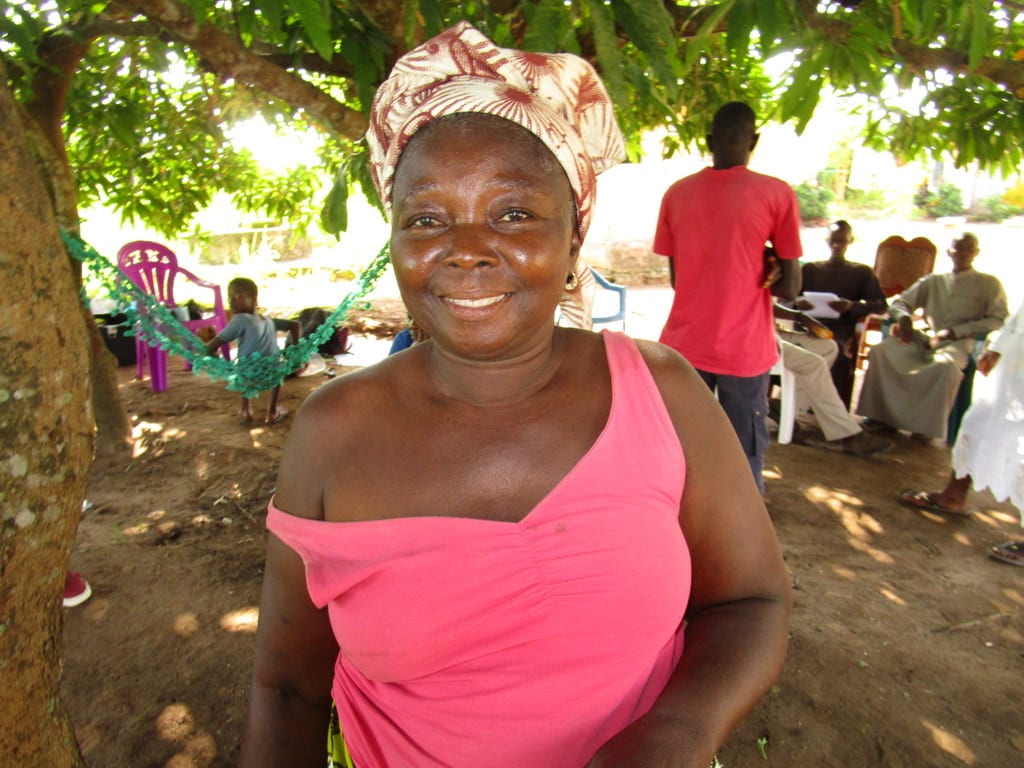This project is a part of our shared program with Mariatu’s Hope of Sierra Leone. Our team is pleased to directly share the below report (edited for clarity, as needed).
Welcome to the Community
The main source of income for most families in Royema Community is begging and looking for handouts. There is a constant cry for jobs, but how can a person find full time employment without the knowledge and training to get it?
The meaning of Royema is "choose where you want." The land used to sit uninhabited, and in the old days, plots of land were given out for free. Now a plot of land costs millions! This specific area was formerly known as Keytorr, but it was recently renamed to Kambees because of a businessman who relocated to the community. He had a guest house that became famous in the chiefdom, and after he moved here, the community decided to take the name of the guest house called "Kambees."
The community is made up of petty traders, farmers and airport workers. Nobody sleeps past 5 AM in the morning, the hustle and bustle starting with a pot of leftover rice and potato leaves, cassava leaves, or sprinkled pepper with palm oil. When there are no leftovers, a local cookery shop will do just fine. A plate of rice and stew will hold anyone over until the evening meal, if there even is any. Not many families can afford to cook everyday, some will settle for anything to fill the stomach.
Water Source
We discovered a well in New Kambees a few years ago, which needed some major pump repairs to get up and running again. We stepped in to assist the community, and also offered hygiene and sanitation training to help them improve health. Without the proper treatment and storage, clean water fetched from the well won't stay clean for long!
But over the course of quarterly visits, we discovered another issue that was keeping this community from having clean water. During March, April, May, and June, no water comes out of the pump! The environment has changed since the well was dug, and it now dries up during the dry season. When this well in New Kambees goes down, it is the children who suffer most. They travel long distances to fetch water from other communities. Alternatively, community members choose to forego the long trip for safe water and fetch water from nearby contaminated sources instead. These include an unprotected shallow well and the swamp. The swamp water is a slight white color and smells like mud. Tadpoles can even be seen swimming around!
A handful of households can afford packaged water during the dry season, while the rest depend on that contaminated shallow well and the swamp.
Sanitation Situation
Over half of households have a pit latrine. Families who don't have their own share with a neighbor. Latrines are the least-valued facility in Sierra Leone. The ones we observed are made of plastic bags sewn together and wrapped around sticks. When community members have to use the bathroom during the night, they go in a bucket in the home, waiting until the morning to empty it in the latrine pit.
There are no hand-washing stations in New Kambees for someone to clean up after using the latrine, dumping waste, before cooking, and whenever. A majority of households dispose of their garbage in the bushes surrounding their property. Less than half of the households here have helpful tools like dish racks and clotheslines to dry their belongings safely.
Mr. Alie Bangura said, "We have the occasional runny stomach, I figure it is from the different types of foods we eat everyday. Cholera is not our portion; the very persistent illness that is constantly affecting us is malaria and typhoid. We eat foods that are not properly preserved, all cooking is done outdoors with flies and animals strolling around the kitchen. It goes as far as animals putting their beaks or mouths into the food, God only knows what they could have eaten before they contaminate the food."
Plans: Hygiene and Sanitation Training
There will be hygiene and sanitation training sessions offered for three days in a row.
Not many hand-washing stations were observed here. After our visit, the hygiene and sanitation trainer decided it would be best to teach community members how to build a tippy tap (a hand-washing station built with a jerrycan, string, and sticks). They will use these tippy taps for hand-washing demonstrations, and will also teach about other tools like dish racks and the importance of properly penning in animals.
These trainings will also strengthen the water user committee that manages and maintains this well. They enforce proper behavior and report to us whenever they need our help solving a serious problem, like a pump breakdown.
Plans: Well Rehabilitation
The well marked for this overhaul is dry for four months every year and needs major work to supply adequate, clean water to the community year round. The pump will be removed, and a man will be lowered inside with a hand auger. This hand auger will allow the team to drill several meters deeper to hit a sufficient water column that will ensure the well supplies water throughout the drier seasons. As the team drills, casing will be installed, transforming this hand-dug well into a pseudo-borehole. PVC piping will connect this lower system directly to the pump, a construction that we know will also improve the quality of water.
Once this plan is implemented, everyone within the community will have access to safe drinking water in both quality and quantity, even through the dry months.

 Protected Dug Well
Protected Dug Well

































